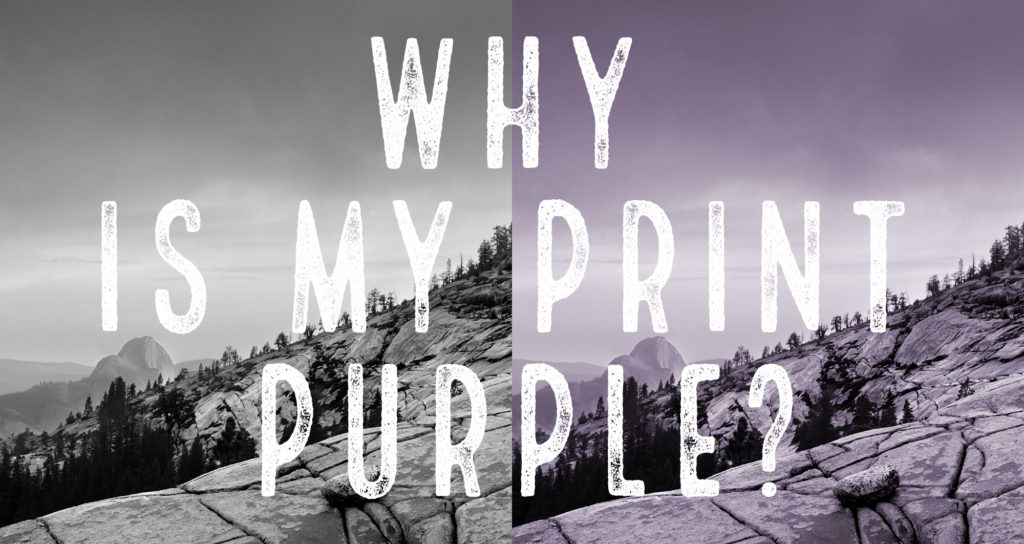
That’s the problem one of my workshop participants was having and asked what could be causing it. This is actually a pretty common problem, but it can be easy to miss until you’ve trained your eyes to see it.
The prints in question were made with the Epson Stylus Photo R1900, which lacks the Light Gray and Light Light Gray found in some other Epson models. That means when it prints a B&W photo, most shades of gray are being made up from the color inks.
It’s very difficult to make a neutral gray from color inks, hence the color cast. The 24 and 44 inch epson and Canon printers, as well as some smaller printers, use two shades of light gray in addition to black to solve this.
Yet even with those extra shades of gray, profiles can be to blame. You need an accurate profile to get neutral color, and canned profiles (the ones that came with your printer or you downloaded from the paper manufacturer) rarely achieve perfect neutrality.
In the case of the Epson R1900, if the photographer wants a better result, they will have to print on a printer that has gray inks and a decent profile.

